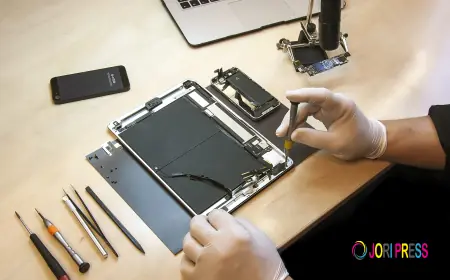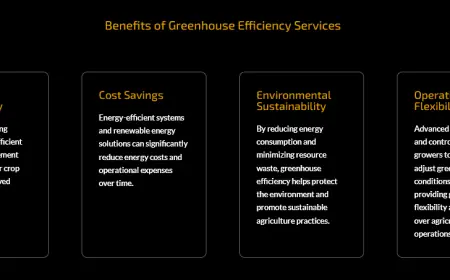Refurbished Electronics Market 2030 Size, Share & Report on Global Growth Opportunities
According to TechSci Research report, “Refurbished Electronics Market Size- Industry Size, Share, Trends, Opportunities and Forecast, 2019-2029F", Global Refurbished Electronics Market was valued at USD 86.53 Billion in 2023 and is anticipated to project robust growth in the forecast period with a CAGR 11.61% through 2029.
Request For Sample Copy of Report For More Detailed Market insight: https://www.techsciresearch.com/sample-report.aspx?cid=21793#requestform
In today’s technology-driven world, electronic devices such as smartphones, laptops, tablets, and gaming consoles have become an integral part of personal, professional, and educational activities. However, the pace of innovation and product launches has shortened the lifecycle of devices, leading consumers to upgrade more frequently. While this trend creates an ever-increasing supply of pre-owned gadgets, it simultaneously fosters the demand for refurbished electronics—high-quality devices restored to optimal working condition and sold at affordable prices.
The refurbished electronics industry represents much more than just a cost-saving alternative; it has become a cornerstone of the circular economy, contributing to reduced electronic waste (e-waste) and advancing sustainability goals globally. This balance between affordability, performance, and environmental consciousness positions the refurbished electronics sector as a transformative force within the broader technology ecosystem.
Industry Key Highlights
-
Strong Market Performance
-
Market value of USD 86.53 billion in 2023.
-
Expected to maintain double-digit CAGR of 11.61% through 2029.
-
-
Growing Consumer Base
-
Increasing adoption among students, corporations, and eco-conscious individuals.
-
Rising preference for premium-brand refurbished devices, especially smartphones and laptops.
-
-
E-Commerce Dominance
-
Online retailers and marketplaces such as Amazon, Back Market, and eBay are leading distribution channels.
-
Online platforms offer greater convenience, transparency, and competitive pricing.
-
-
Regional Leadership
-
North America remains the fastest-growing region due to advanced refurbishing infrastructure, high consumer awareness, and favorable regulations.
-
Growing demand in Asia-Pacific driven by affordability needs and expanding middle-class populations.
-
-
Sustainability Focus
-
Rising awareness of environmental benefits is pushing refurbished devices into mainstream consumer choices.
-
Governments and corporates alike are emphasizing refurbished electronics as part of green initiatives.
-
Browse over XX market data Figures spread through XX Pages and an in-depth TOC on the "Global Refurbished Electronics Market."@https://www.techsciresearch.com/report/refurbished-electronics-market/21793.html
Market Dynamics
1. Key Drivers
a. Cost Savings and Affordability
One of the most powerful drivers of this market is affordability. Refurbished devices provide consumers access to premium technologies at prices significantly lower than brand-new models. Students, small businesses, and budget-conscious households often view refurbished electronics as the perfect blend of cost and functionality.
b. Technological Advancements Fueling Supply
With major technology brands releasing upgraded models every year, consumers are inclined to switch devices frequently. This creates a steady supply of lightly used gadgets, which can be refurbished to extend their lifecycle. Smartphones, laptops, and tablets are the most common devices entering the refurbishing cycle.
c. Environmental Awareness and Sustainability
Global concerns about e-waste—currently one of the fastest-growing waste streams—are driving consumers toward refurbished electronics. By extending the lifespan of existing devices, the market directly contributes to reducing landfill waste and lowering carbon footprints. For eco-conscious consumers and organizations, purchasing refurbished products aligns with sustainability goals.
d. Supportive Regulatory Environment
Governments worldwide are introducing policies to regulate refurbishment practices and ensure quality standards. Certifications such as "Certified Refurbished" provide assurance to buyers regarding safety, warranty, and performance, thereby fostering consumer confidence.
2. Key Challenges
a. E-Waste Management Gaps
Despite growth in refurbishment, a significant percentage of discarded devices still end up in landfills. Capturing this untapped supply remains a critical challenge.
b. Consumer Perception
Although consumer trust has improved, lingering misconceptions about the reliability and quality of refurbished products still exist, particularly in developing markets.
c. Fragmented Supply Chains
The refurbishing ecosystem is complex, involving multiple stakeholders such as collectors, refurbishers, distributors, and retailers. Ensuring consistent quality standards across this fragmented landscape can be challenging.
Emerging Trends
1. Premium Device Refurbishment
Consumers are increasingly showing interest in refurbished premium smartphones, laptops, and gaming consoles. Flagship devices from brands like Apple, Samsung, and Dell remain in high demand due to their durability and performance.
2. E-Commerce Platform Expansion
Dedicated online marketplaces such as Back Market are reshaping the industry by offering certified refurbished products with warranties, easy return policies, and transparent grading systems. This trend is expected to dominate the retail landscape through 2029.
3. Rise of Certified Refurbished Programs
Major corporations and retailers have launched in-house refurbishment programs. Examples include Apple’s “Certified Refurbished” initiative and Amazon’s “Renewed” program. Such initiatives set industry-wide quality benchmarks.
4. AI-Powered Quality Testing
Artificial Intelligence and advanced diagnostic tools are increasingly being deployed to assess device health during refurbishment, ensuring more accurate grading and better reliability.
5. Corporate and Institutional Adoption
Large organizations, government agencies, and educational institutions are embracing refurbished electronics as part of cost-saving measures and sustainability initiatives. Bulk purchases of refurbished laptops and tablets are becoming increasingly common in schools and universities.
Key market players in the global Refurbished Electronics market are: -
- Amazon.com, Inc.
- Back Market, Inc.
- eBay Inc.
- Entertainment Magpie, Inc. (Decluttr)
- Swappa, LLC
- Cordon Group
- ecoATM, LLC
- GameStop, Inc.
- Newegg Inc.
- Dell Technologies Inc.
Customers can also request for 10% free customization on this report
Future Outlook
The future of the refurbished electronics market looks remarkably promising. Several factors will contribute to its expansion:
-
Mainstream Acceptance – As consumer trust continues to grow, refurbished electronics will increasingly become mainstream rather than niche purchases.
-
Sustainability as a Core Driver – With global pressure to reduce e-waste, refurbished products will be central to achieving sustainability targets.
-
Wider Product Categories – Beyond smartphones and laptops, more categories such as smartwatches, VR headsets, and IoT devices will enter the refurbishing cycle.
-
Government Support – Policies promoting circular economy models will encourage refurbishing and recycling at scale.
-
Technological Integration – AI and blockchain will be used for device diagnostics, grading, and ensuring supply chain transparency.
By 2029, the refurbished electronics market is expected to exceed USD 160 billion, positioning itself as a critical component of the global electronics ecosystem.
Contact US:
Techsci Research LLC
420 Lexington Avenue, Suite 300,
New York, United States- 10170
Tel: +13322586602
What's Your Reaction?
 Like
0
Like
0
 Dislike
0
Dislike
0
 Love
0
Love
0
 Funny
0
Funny
0
 Angry
0
Angry
0
 Sad
0
Sad
0
 Wow
0
Wow
0




















































